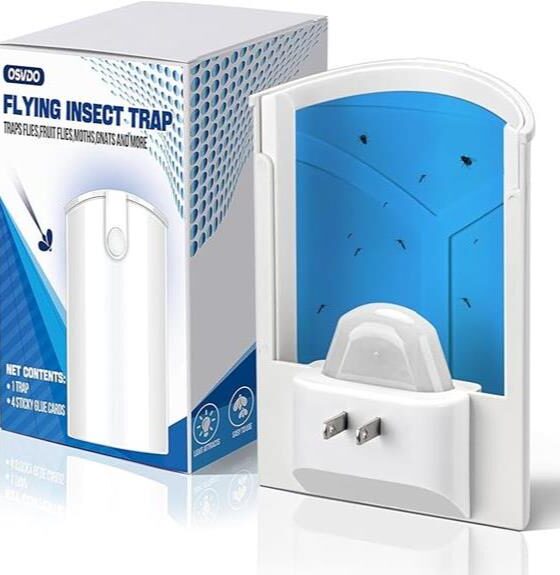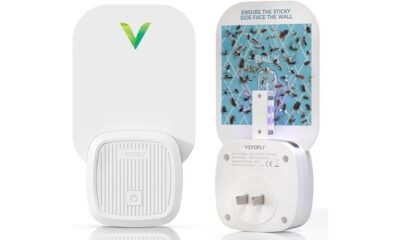Decor
How to Create a Navy Shiplap Accent Wall
Dive into the world of navy shiplap accent walls and discover the secrets to creating a stunning, high-impact design that transforms your space.
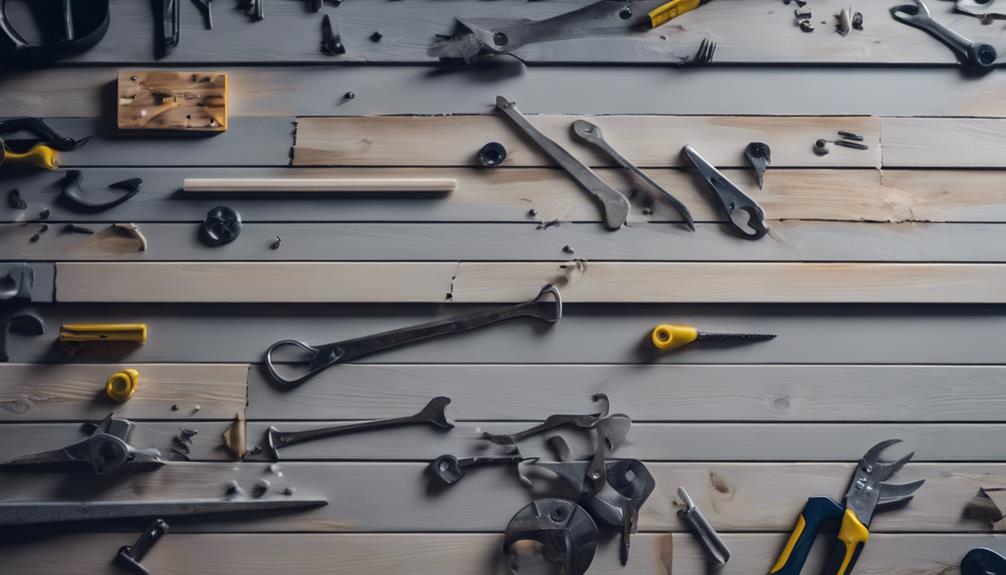
We're taking on a navy shiplap accent wall project, which requires meticulous planning and attention to detail to achieve a seamless, high-impact look that elevates our space. To get started, we'll measure the wall area, considering angled cuts for a seamless installation. We'll select a navy paint color that complements our design style and prepare our shiplap boards by sanding and priming. With careful planning, we'll install the shiplap accent wall, overlapping rows by about 1/4 inch for a seamless look. As we move forward, we'll explore adding finishing touches, customizing our design to fit our unique style and space, and discovering the versatility of navy shiplap.
Key Takeaways
• Measure the wall area accurately to determine the number of shiplap boards needed, considering angled cuts for a seamless installation.
• Prepare shiplap boards by sanding, wiping off dust, priming, and painting with a high-quality paintbrush or roller for even coverage.
• Install shiplap boards level and securely, overlapping rows by about 1/4 inch for a seamless look, and consider vertical installation for a rustic feel.
• Choose a navy paint color that complements the design style, and apply coats allowing each to dry completely before adding additional coats.
• Add finishing touches by incorporating silver-toned fixtures, weathered wood sink vanities, and coastal decor to create a serene and relaxing atmosphere.
Measuring and Preparing the Wall
We start by measuring the wall area to determine the amount of shiplap needed for our navy accent wall, taking into account any angled cuts required for a seamless installation. It's important to keep in mind the highest part of the wall when measuring to make sure we don't miss any tricky cuts.
Once we've our measurements, we head to a local home improvement store like Home Depot to explore navy shiplap options. We opt for primed boards that are 4 inches wide, which will provide a smooth finish.
Before installation, we plan to paint the shiplap, focusing on the groove part to achieve a professional look. We choose a navy hue that complements our room's color scheme.
Painting and Preparing Shiplap
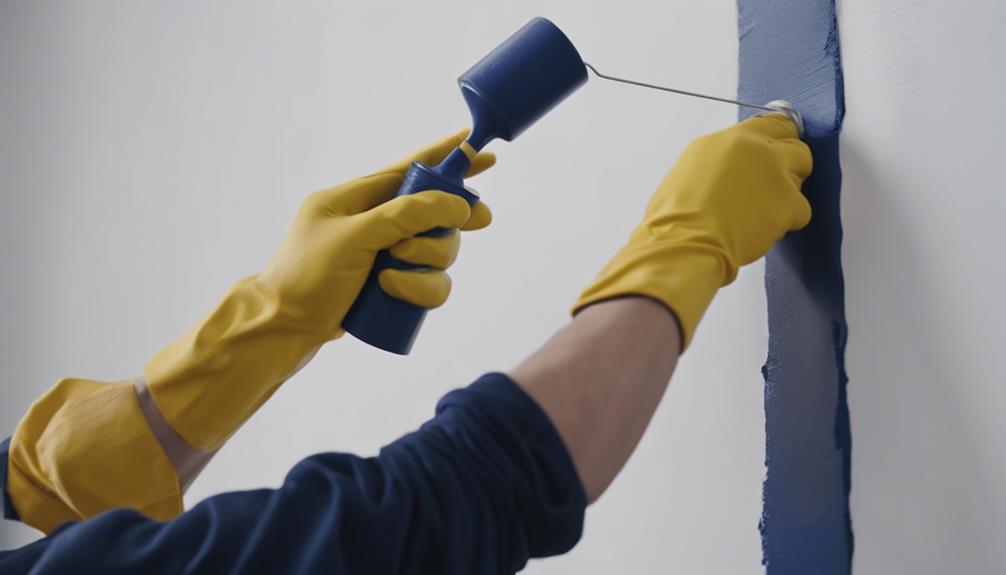
With our measurements and materials in hand, we're ready to bring our navy accent wall to life by painting and preparing the shiplap boards. We'll start by selecting a navy paint color that complements our design style. Before applying the paint, we'll prepare the shiplap boards by sanding them smooth and wiping off any dust. This guarantees a smooth finish and even coverage of the navy paint.
Next, we'll apply a coat of primer to the shiplap boards to establish a strong bond between the paint and the boards. Once the primer is dry, we'll use a high-quality paintbrush or roller to apply the navy paint, working in sections to maintain even coverage. We'll allow the first coat to dry completely before applying additional coats, if necessary.
Installing Shiplap Accent Wall

Typically, installing a shiplap accent wall requires careful planning and attention to detail to achieve a professional-looking result.
We're now ready to install our navy shiplap accent wall, which will Create a focal point in our room. To begin, we'll start by installing the first row of shiplap boards, ensuring they're level and securely fastened to the wall. We'll then continue adding rows, overlapping each board by about 1/4 inch to create a seamless look.
For a more rustic, farmhouse feel, we can install the shiplap vertically, adding visual interest to the space. Alternatively, a horizontal installation can make the room feel wider and more spacious.
Regardless of the orientation, our navy shiplap wall behind the TV or fireplace will help blend in electronic devices and create a sophisticated ambiance. With careful planning and attention to detail, we'll Install a Shiplap accent wall that adds depth and richness to our room, making it a true showstopper.
Adding Finishing Touches
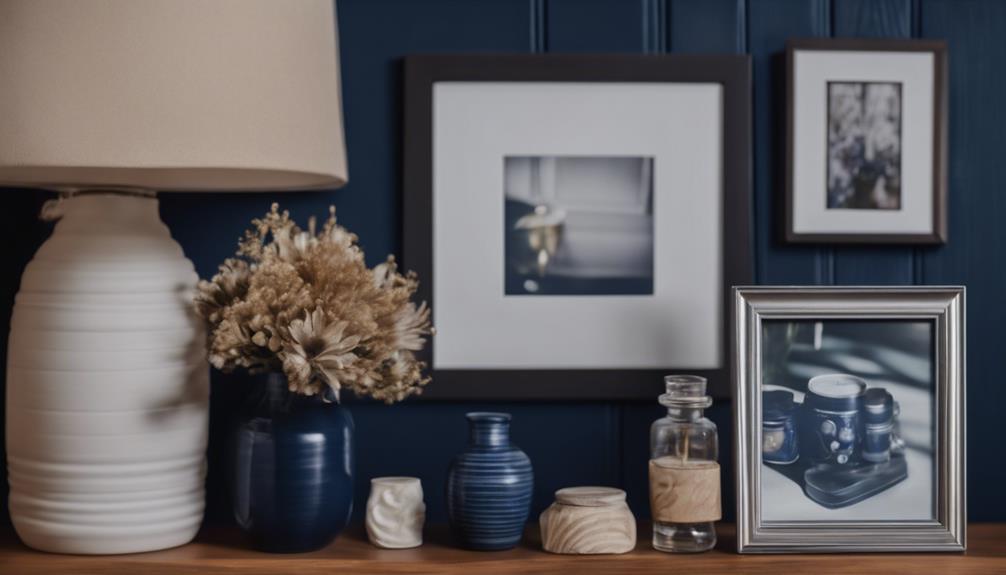
Now that our navy shiplap accent wall is installed, it's time to add those finishing touches that will elevate its style and sophistication.
We're excited to take our accent wall to the next level by incorporating silver-toned fixtures that complement the navy shiplap perfectly. The contrast between the cool, dark tones of the shiplap and the sleek, modern silver fixtures is a match made in heaven.
To further enhance the coastal vibe, we're considering weathered wood sink vanities that will add a touch of rustic charm to our space. The navy shiplap accent wall serves as the perfect backdrop for our coastal decor, creating a serene and relaxing atmosphere in our bathroom.
Tips and Variations for Navy Shiplap
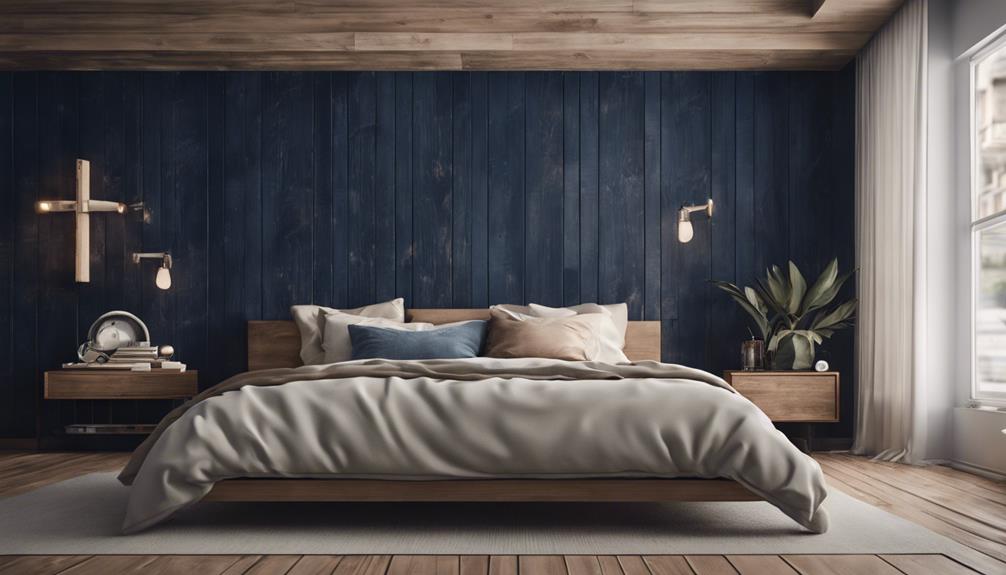
As we explore the world of navy shiplap, we're excited to investigate the various ways to customize and adapt this design element to fit our unique style and space. One of the most versatile aspects of navy shiplap is its ability to complement a range of decor styles, from coastal to modern farmhouse.
We've found that incorporating navy shiplap accent walls can create a bold and dramatic focal point in a room, adding richness and depth to the space.
To take our DIY project to the next level, we can experiment with different orientations, such as a vertical shiplap accent wall, to create a striking visual effect. Additionally, navy shiplap can be used to cleverly camouflage wall-mounted electronics, resulting in a cohesive and streamlined look.
Frequently Asked Questions
How to DIY Shiplap Accent Wall?
When tackling a DIY shiplap accent wall, we start by measuring the wall area to determine the necessary materials.
Next, we purchase the shiplap panels and paint them to achieve a cohesive look.
After locating the wall studs, we measure, cut, and nail the panels in place, working from left to right for a professional finish.
With careful planning and attention to detail, we can create a stunning shiplap accent wall that elevates our space.
Does Shiplap Make a Room Look Bigger or Smaller?
As we're about to 'pull back the curtain' on this design dilemma, let's explore whether shiplap makes a room look bigger or smaller.
The answer lies in its strategic application. When installed vertically, shiplap creates a sense of height, making the room appear more spacious.
Conversely, horizontal shiplap can make a room feel wider. By cleverly using shiplap, we can create the illusion of a more expansive space.
Do You Start Shiplap From Top or Bottom?
When it comes to installing shiplap, we often wonder where to start. Do we begin at the top or the bottom?
In our experience, we've found that starting from the bottom is the way to go. This approach guarantees a more secure and stable installation, allowing us to adjust for any unevenness in the floor or ceiling, and ultimately, achieve a cleaner and more polished finish.
What Trim to Use for Shiplap Accent Wall?
When it comes to selecting the perfect trim for our accent wall, we're faced with a plethora of options. We're not looking for anything too flashy, just a subtle complement to our navy shiplap.
We'll opt for a simple, minimal trim that enhances the clean lines of our shiplap without drawing attention away from it. A quarter round or cove molding would be an excellent choice, adding a touch of sophistication without overpowering the space.
Conclusion
As we step back to admire our handiwork, the navy shiplap accent wall stands out like a beacon, adding a touch of sophistication to the room.
Like a well-crafted puzzle, each plank fits seamlessly together, creating a cohesive look that's both modern and timeless.
With these steps, we've bridged the gap between vision and reality, transforming a plain wall into a stunning focal point that anchors the space.
- About the Author
- Latest Posts
Introducing Ron, the home decor aficionado at ByRetreat, whose passion for creating beautiful and inviting spaces is at the heart of his work. With his deep knowledge of home decor and his innate sense of style, Ron brings a wealth of expertise and a keen eye for detail to the ByRetreat team.
Ron’s love for home decor goes beyond aesthetics; he understands that our surroundings play a significant role in our overall well-being and productivity. With this in mind, Ron is dedicated to transforming remote workspaces into havens of comfort, functionality, and beauty.
Decor
5 Creative DIY Repurposed Planter Ideas
Innovative ways to transform everyday items into stunning planters will inspire your next gardening project.
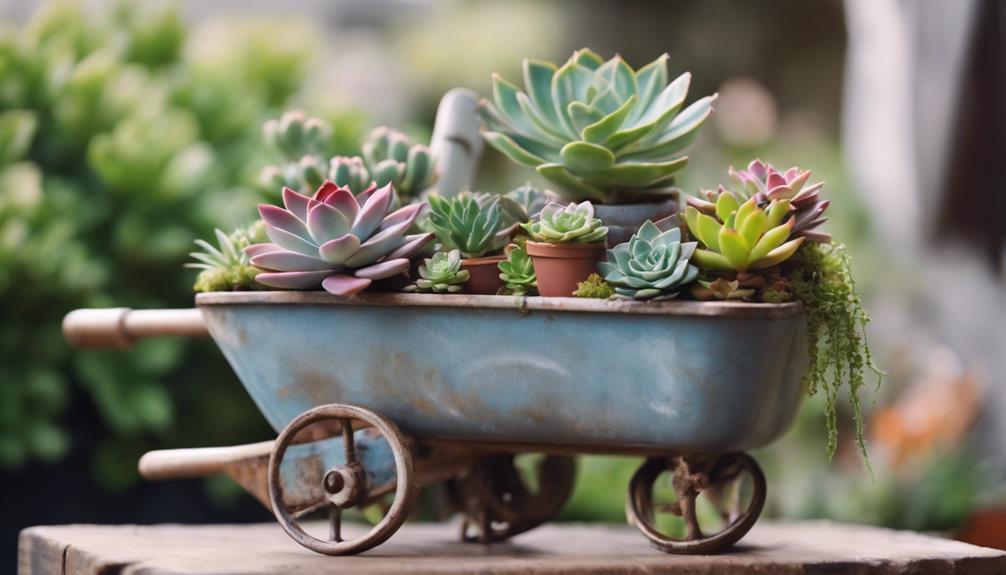
Discover 5 creative repurposed planter ideas to elevate your gardening game. Transform a colander into a herb haven with built-in drainage. Embrace industrial chic with tire succulent planters that offer durability and style. Add charm with teacup flower pots, perfect for small spaces. Opt for a toolbox vegetable garden for rustic organization and portability. Upcycle a dresser drawer for a vintage touch to your green space. Each idea brings a unique twist, blending functionality with creativity. There's much more to explore in the world of repurposed planters.
Key Takeaways
- Colander Herb Garden: Upcycle for drainage, ideal for hanging gardens.
- Tire Succulent Planters: Industrial look, durable, suitable for large succulents.
- Teacup Flower Pots: Charming, compact, perfect for small spaces.
- Toolbox Vegetable Garden: Rustic, portable, efficient organization for plants.
- Dresser Drawer Planter: Upcycle old furniture, vintage charm, customizable for a rustic look.
Colander Herb Garden
Let's repurpose old colanders into unique planters for herbs. Transforming these kitchen staples into charming Colander Herb Gardens is a fantastic DIY project that adds a creative touch to your living space.
The upcycled colanders provide built-in drainage holes, ensuring proper care for your herbs by preventing waterlogging. Their versatility makes them ideal for hanging or wall-mounted gardens, maximizing space in kitchens or outdoor areas.
Creating a Colander Herb Garden is a fun and budget-friendly way to bring greenery into your home. Hunt for old colanders at thrift stores or flea markets to start your project. Once you have your colander, simply fill it with soil and plant your favorite herbs.
This container gardening idea not only serves a practical purpose by providing fresh herbs for cooking but also adds a unique decorative element to your surroundings. Embrace the creativity of repurposing everyday items into functional pieces with a Colander Herb Garden.
Tire Succulent Planters
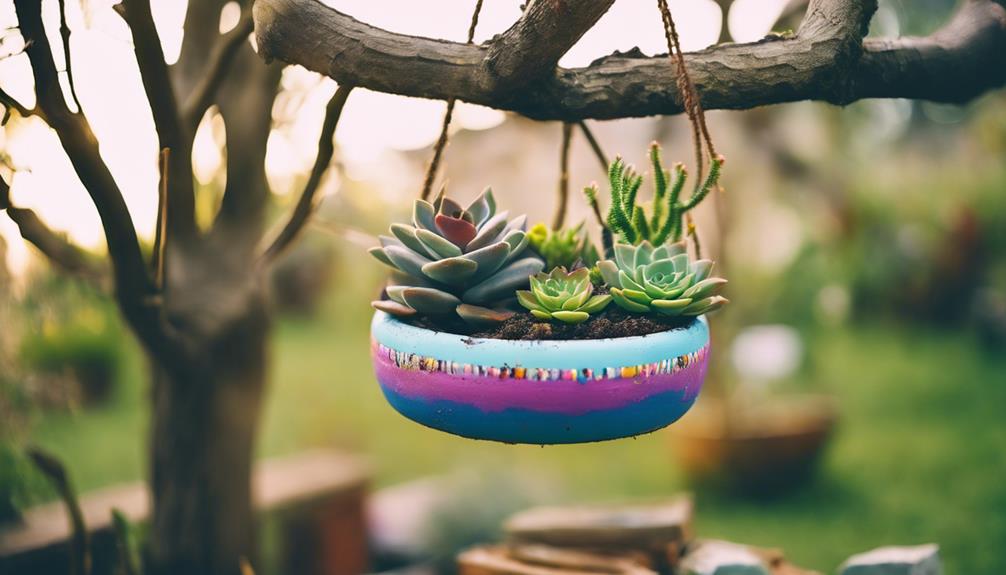
Repurposing old tires as unique succulent planters adds an industrial touch to your garden space. These repurposed planters are particularly suitable for large succulent plants, thanks to the size and depth of the tire planter.
One of the advantages of using old tires for succulents is the ease with which they can be painted or decorated to match your garden's aesthetic. Additionally, these tire planters are a sustainable choice as they're durable and long-lasting, reducing waste and offering an environmentally friendly option for your garden.
By arranging multiple tire succulent planters in a creative display, you can create a striking visual impact in your outdoor space. The industrial look of the tires combined with the natural beauty of the succulents offers a unique and eye-catching addition to any garden.
Teacup Flower Pots
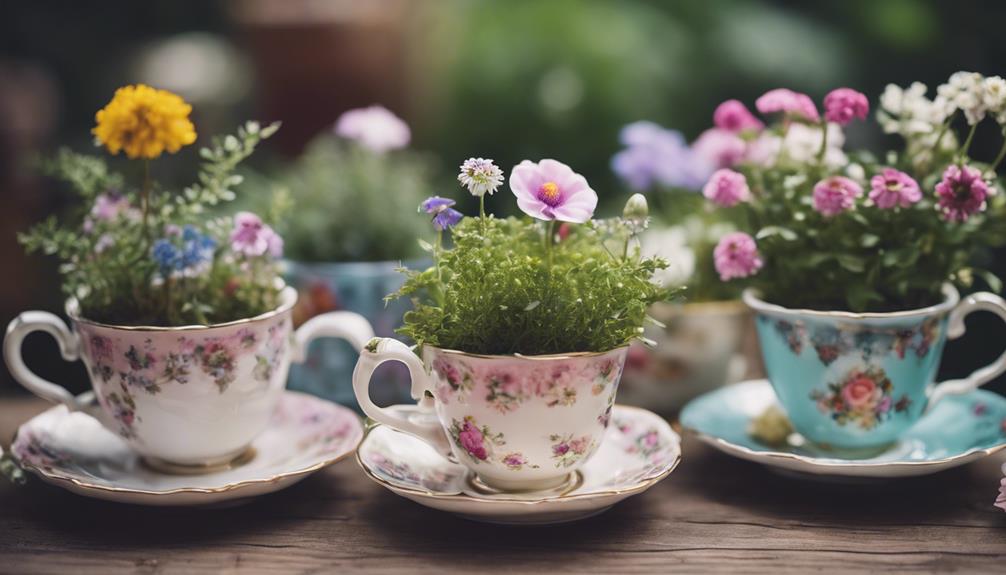
When considering creative and whimsical garden display options, teacup flower pots stand out as charming and compact solutions. These repurposed teacups offer a delightful way to showcase small plants or succulents, adding a vintage touch to both indoor and outdoor gardens. Their petite size makes them ideal for small spaces, providing a creative and DIY-friendly gardening option for enthusiasts. Teacup flower pots are perfect for displaying colorful flowers or creating mini herb gardens, allowing for a touch of nature in even the tiniest of spaces.
The beauty of teacup flower pots lies in their versatility and ease of customization to fit any decor style. Whether used individually to highlight a single plant or grouped together for a charming display, these tiny planters bring a touch of whimsy to any garden setting.
Embrace the creativity and uniqueness of teacup flower pots to elevate your gardening experience with a touch of elegance and nostalgia.
Toolbox Vegetable Garden
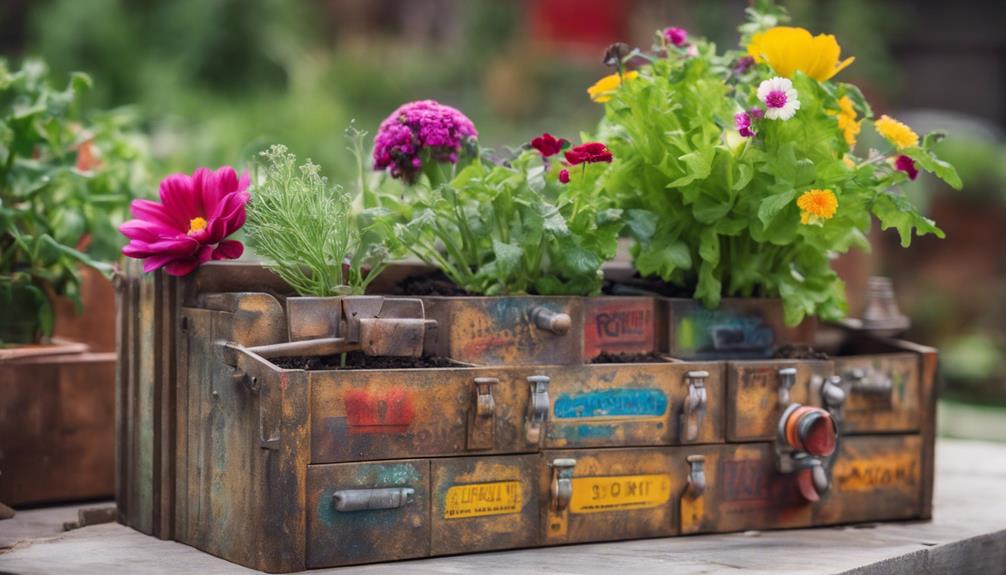
Transforming an old toolbox into a unique vegetable garden planter offers a creative and practical way to grow herbs, small vegetables, or flowers. The compartments of the toolbox provide separate spaces for different plants, allowing for efficient organization and growth.
These toolbox planters aren't only functional but also add a rustic and charming touch to your outdoor space. One of the key advantages of a toolbox vegetable garden is its portability; you can easily move it around your garden or patio to optimize sunlight exposure or simply change up your outdoor decor.
The combination of the sturdy toolbox structure with the delicate beauty of herbs creates a visually appealing contrast that can enhance any garden setting. Whether you hang it on a wall or place it on a tabletop, a repurposed toolbox filled with an assortment of herbs can be a versatile and eye-catching addition to your home garden.
Dresser Drawer Planter

Old dresser drawers can be creatively repurposed as unique planters for your garden or outdoor space. This innovative idea not only provides a sustainable way to upcycle old furniture but also adds a touch of charm to your garden decor.
Dresser drawer planters offer a creative canvas for showcasing cascading flowers or aromatic herbs, allowing you to design a multi-level planting display that stands out.
- Dresser drawers offer a unique and unexpected twist on traditional planters.
- Upcycling old drawers into planters adds visual interest to your garden.
- The vintage and rustic look of dresser drawer planters enhances the overall garden aesthetics.
- Customizable with different paint colors or designs, these planters can be tailored to suit your personal style preferences.
Frequently Asked Questions
How to Repurpose Old Planters?
When repurposing old planters, we start by thoroughly cleaning and evaluating their condition for potential reuse.
Consider painting or decorating them to match your garden's aesthetic. Get creative by transforming them into hanging planters, vertical gardens, or unique focal points.
Repurposing old planters is sustainable and budget-friendly, adding charm to your outdoor space. Explore DIY projects like herb gardens, succulent displays, or colorful flower arrangements to breathe new life into old planters.
What Can You Do With Planters Besides Plants?
In addition to considering alternative uses for planters beyond their traditional purpose of housing plants, there are several creative options available.
These versatile containers can serve as decorative elements by holding candles, potpourri, or seasonal decorations. They offer practical storage solutions for garden tools, gloves, or small outdoor accessories.
Moreover, planters can be repurposed into bird feeders, outdoor drink coolers, or even unique lighting fixtures using fairy lights or candles. The possibilities for repurposing planters are varied and offer a chance to showcase creativity and functionality in outdoor spaces.
How to Upcycle Plant Pots?
When repurposing plant pots, there are various methods to consider.
One option is to paint them for a fresh look. Another creative idea is to stack them for vertical gardens.
You can also repurpose plant pots by using them as water collectors to prevent mess.
Cutting plastic bottles in half can create unique planters, while flipping bottle tops can be used for herb gardens.
Upcycling plastic bags into large planters with drainage holes guarantees mobility for future moves.
Lastly, plastic buckets are perfect for apartment gardening due to their size and handles for easy transport.
What Can I Make a Planter Out Of?
We can make planters out of a variety of materials to suit different gardening needs and aesthetics. Options include repurposing plastic food containers for space efficiency, using glass jars for plant propagation and versatile DIY projects, creating durable planters from tin cans for upcycling, utilizing eggshells as mini nutrient-rich planters, and repurposing old tires for sustainable outdoor displays.
Each material offers unique benefits and creative opportunities for personalized gardening solutions.
Conclusion
To sum up, these DIY repurposed planter ideas offer a unique and creative way to add greenery to your space. While they may seem unconventional, they can truly transform any garden or indoor area.
So why not think outside the box and give one of these projects a try? Who knows, you may just discover a newfound love for gardening in the most unexpected of places.
- About the Author
- Latest Posts
Introducing Ron, the home decor aficionado at ByRetreat, whose passion for creating beautiful and inviting spaces is at the heart of his work. With his deep knowledge of home decor and his innate sense of style, Ron brings a wealth of expertise and a keen eye for detail to the ByRetreat team.
Ron’s love for home decor goes beyond aesthetics; he understands that our surroundings play a significant role in our overall well-being and productivity. With this in mind, Ron is dedicated to transforming remote workspaces into havens of comfort, functionality, and beauty.
Decor
DIY Rustic Coat Rack in 5 Simple Steps
Make your entryway charming with a DIY rustic coat rack in 5 simple steps – start creating a cozy vibe now!
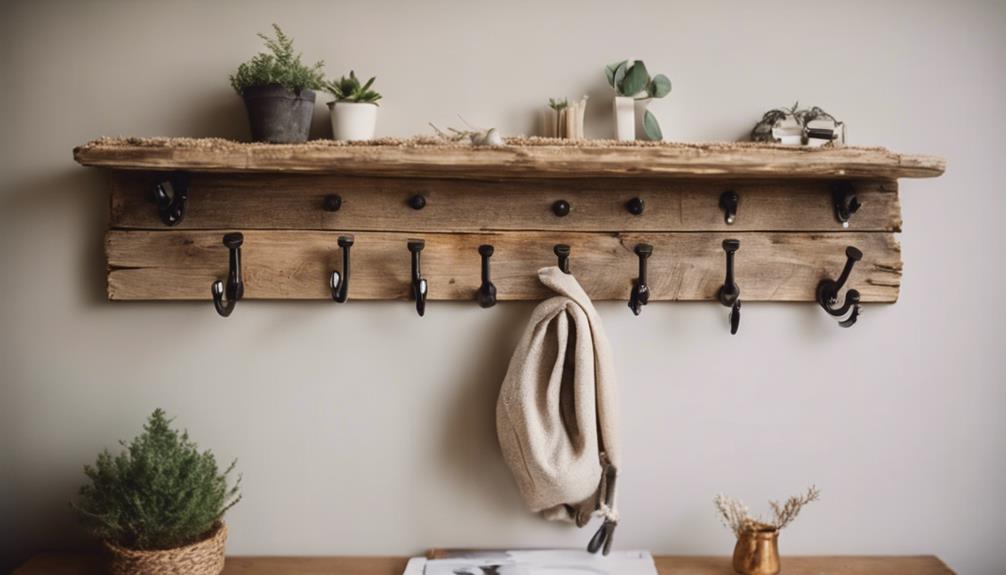
Craft a charming DIY rustic coat rack by carefully selecting reclaimed barn wood and black metal hooks for authenticity and visual appeal. Guarantee hooks are evenly spaced and pre-drill holes for secure attachment. Predrill accurately into barn wood to guide screws for stability. Use 2 ½-3' screws into wall studs for a secure wall attachment. Personalize with farmhouse name slot hooks and decor for a cozy vibe. Create an inviting atmosphere with hats, bags, or greenery on the rack. Share your stylish entryway on social media to inspire others. Follow five simple steps for a functional and visually appealing DIY coat rack.
Key Takeaways
- Choose reclaimed barn wood and black metal hooks for an authentic rustic look.
- Lay out hooks evenly and mark holes on the wood for precise placement.
- Predrill holes in the wood for secure installation and to prevent splitting.
- Secure the rack to wall studs using 2 ½-3' screws for stability.
- Personalize the rack with farmhouse hooks and decor for a cozy entryway vibe.
Selecting Materials
When creating a rustic coat rack, we recommend selecting materials such as reclaimed barn wood and black metal farmhouse-style hooks for an authentic and cohesive design.
The use of reclaimed barn wood adds a charming rustic touch to the farmhouse coat rack, giving it a weathered and unique appearance. This type of wood also carries a sense of history and sustainability, perfect for a DIY project.
Pairing the barn wood with black metal farmhouse-style hooks complements the rustic look and guarantees a visually appealing finish. The contrast between the natural wood and the black metal hooks creates a striking aesthetic that enhances the overall design of the rack.
Laying Out Hooks and Marking Holes
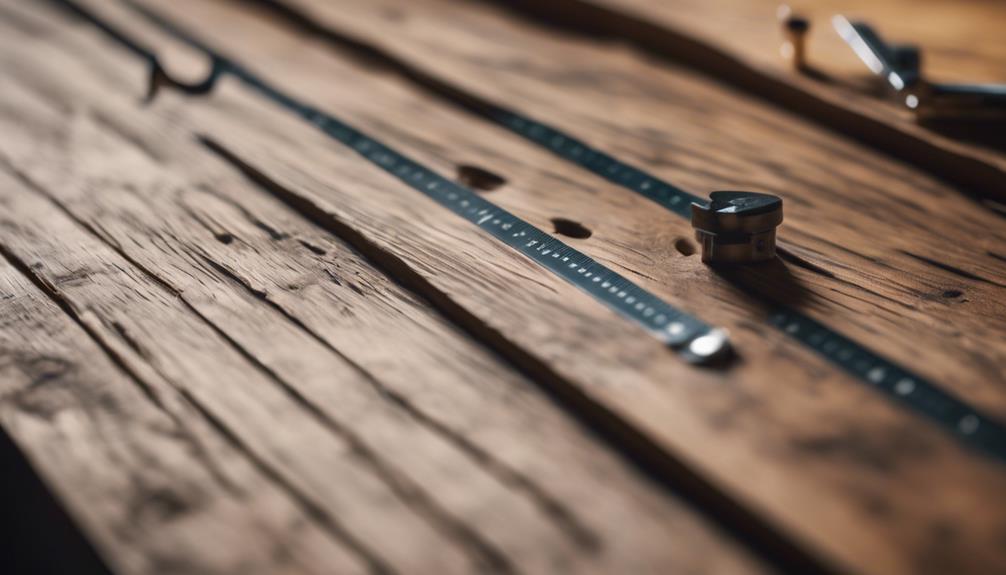
Let's lay out the hooks on the barn wood to determine the spacing and arrangement. It's important to guarantee that the hooks are evenly spaced for a balanced and functional coat rack.
Using precise measurements, mark the screw hole locations on the barn wood according to the hook placements. A pencil or marker can be handy for this task, allowing for accurate markings.
To guarantee a secure attachment, pre-drill holes in the barn wood at the marked locations. This step is essential to prevent the wood from splitting when the screws are inserted. By pre-drilling, you also make the installation process smoother and more efficient.
Secure attachment is crucial for the coat rack to hold the weight of multiple coats or items without any risk of detachment. Properly marking the screw hole locations and pre-drilling holes will help in achieving a sturdy and durable coat rack.
Predrilling for Installation
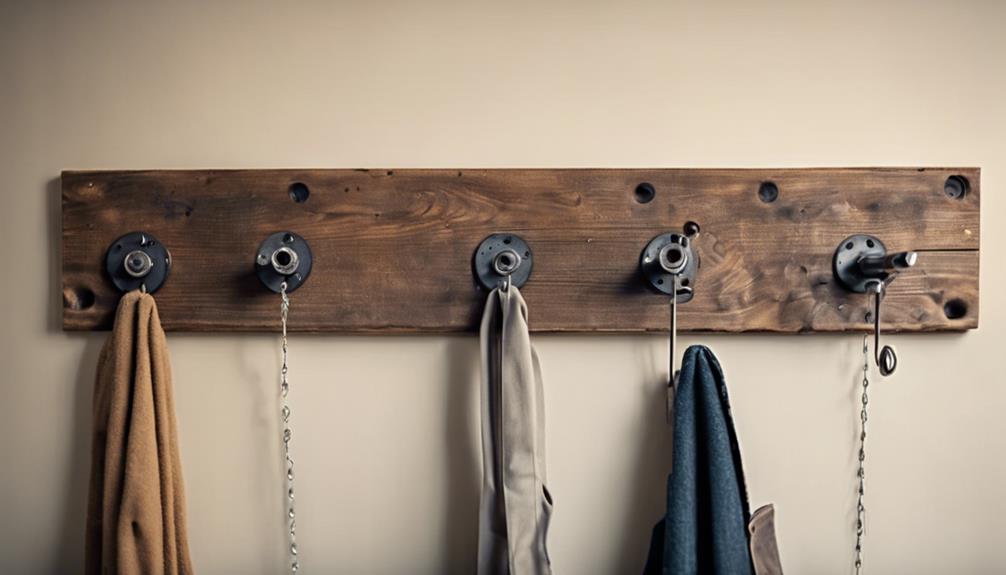
To guarantee precise and secure installation of the coat rack onto the wall, predrilling holes in the barn wood is essential. Using a drill with the correct bit size is vital to prevent splitting or cracking of the wood during this process.
Predrilling prepares the wood for the insertion of screws by creating pilot holes, which guide the screws accurately into place. Properly spaced and aligned pilot holes are important for ensuring a straight and stable attachment of the coat rack to the wall.
This step not only aids in the smooth installation of the coat rack but also contributes greatly to its longevity and durability. By predrilling the holes, you're taking a proactive measure to secure the coat rack firmly in place, minimizing the risk of damage to both the wood and the wall during the installation process.
Securing Rack to Wall
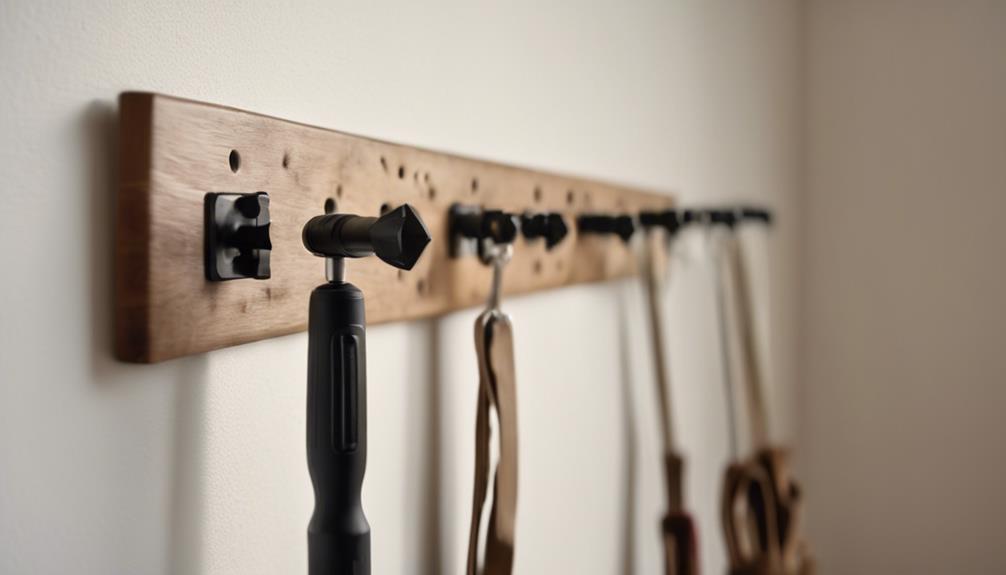
For a secure attachment, we use 2 ½-3' screws through the back panel into wall studs when securing the rustic coat rack to the wall. It's important to make sure that the weight of the DIY Coat Rack is supported by the wall studs to prevent accidents and ensure stability.
Here are some tips for securing the rack to the wall:
- Locate Wall Studs: Use a stud finder to locate the wall studs where you'll be attaching the coat rack.
- Drill Screws Carefully: Make certain the screws are drilled through the back panel and into the wall studs securely.
- Consider Heavy-Duty Wall Anchors: If wall studs aren't available or aren't positioned where needed, consider using heavy-duty wall anchors to provide additional support for the coat rack.
Styling and Personalizing Rack
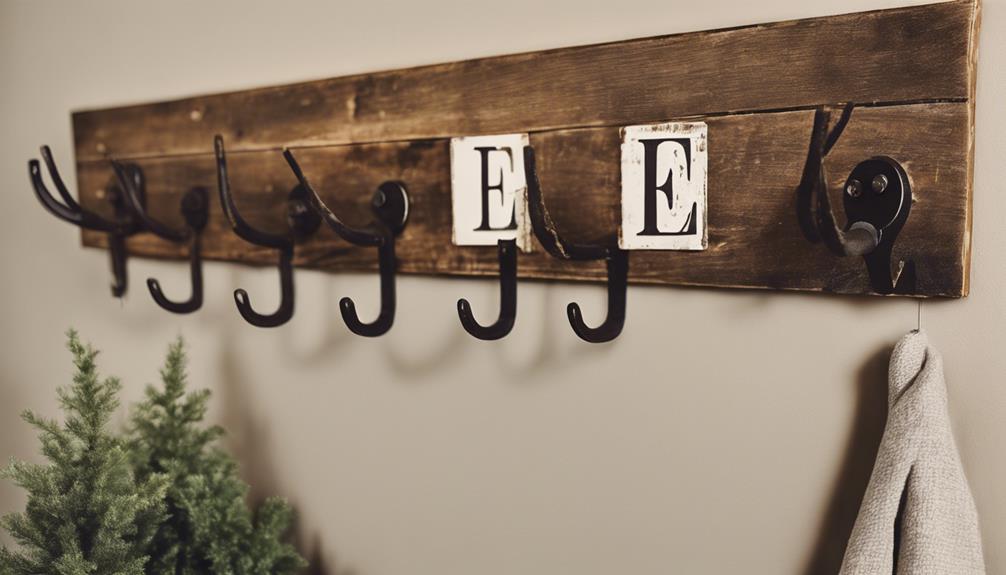
When styling and personalizing the rustic coat rack, consider incorporating farmhouse name slot hooks to add a charming and rustic touch. These hooks not only serve a functional purpose but also enhance the overall aesthetic of the coat rack, bringing in a touch of Farmhouse Style to your entryway.
Arrange items like hats, bags, and greenery on the hooks to create a cozy and inviting atmosphere in your home. By utilizing the coat rack in this manner, you can transform your foyer into a casual and welcoming space that reflects your personal style and taste in Home Decor.
For additional styling, consider adding a small wreath or other decorative items to further enhance the coat rack's visual appeal. You can find a variety of farmhouse-inspired decorations at stores like Home Depot or Hobby Lobby to complement your DIY projects.
Once you've personalized your coat rack, share your front entryway makeover on social media platforms to inspire others and receive feedback on your cozy and inviting space.
Frequently Asked Questions
How to Make Your Own Coat Rack?
To make your own coat rack, gather reclaimed wood for a rustic touch. Secure hooks evenly for functional storage. Install the rack by attaching it to wall studs with long screws.
Personalize it with hats and bags. Share your finished project on social media for inspiration.
How Many Coats Fit on a 5 Coat Rack?
When considering the capacity of a 5 coat rack, it's essential to recognize that the number of coats it can hold directly correlates with the number of hooks it possesses. Each hook on a coat rack is designed to accommodate one coat, jacket, or piece of clothing.
As such, a 5 coat rack, with its 5 hooks, is ideally structured to efficiently hang 5 coats. The spacing between the hooks plays a key role in determining the rack's capacity to hold garments effectively.
How Do You Make a Coat Rack Out of an Old Door?
To repurpose an old door into a coat rack, follow these steps:
- Cut the door to the desired dimensions.
- Sand the door for a smooth finish.
- Attach hooks and a shelf for added functionality.
Ensure stability by securely mounting the coat rack to wall studs.
Personalize the coat rack by painting or staining it to match your home decor.
The rustic character of the door will add charm to the finished coat rack.
This project combines creativity and practicality to create a unique home organization solution.
How to Make Wooden Coat Hooks?
When making wooden coat hooks, we prioritize functionality and aesthetics. Carefully selecting high-quality wood guarantees durability and a pleasing appearance. Precision is key; measuring and marking the placement for symmetry is essential.
Utilizing a drill to create pilot holes for secure attachment is necessary. Considering weight-bearing capacity guides our choice of screws for installation.
Lastly, sanding edges and applying a protective sealant adds longevity and a polished finish to the wooden coat hooks.
Conclusion
To sum up, creating your own rustic coat rack is a simple and rewarding project that can add charm and functionality to your space.
By following these five steps, you can customize a piece that fits your style and needs perfectly.
So gather your materials, grab your tools, and get started on this DIY project today!
- About the Author
- Latest Posts
Introducing Ron, the home decor aficionado at ByRetreat, whose passion for creating beautiful and inviting spaces is at the heart of his work. With his deep knowledge of home decor and his innate sense of style, Ron brings a wealth of expertise and a keen eye for detail to the ByRetreat team.
Ron’s love for home decor goes beyond aesthetics; he understands that our surroundings play a significant role in our overall well-being and productivity. With this in mind, Ron is dedicated to transforming remote workspaces into havens of comfort, functionality, and beauty.
Decor
Make a Birds Nest in 7 Simple Steps
Nurture your creativity with seven steps to craft a realistic and charming birds nest, perfect for home decor or a nature-inspired display.
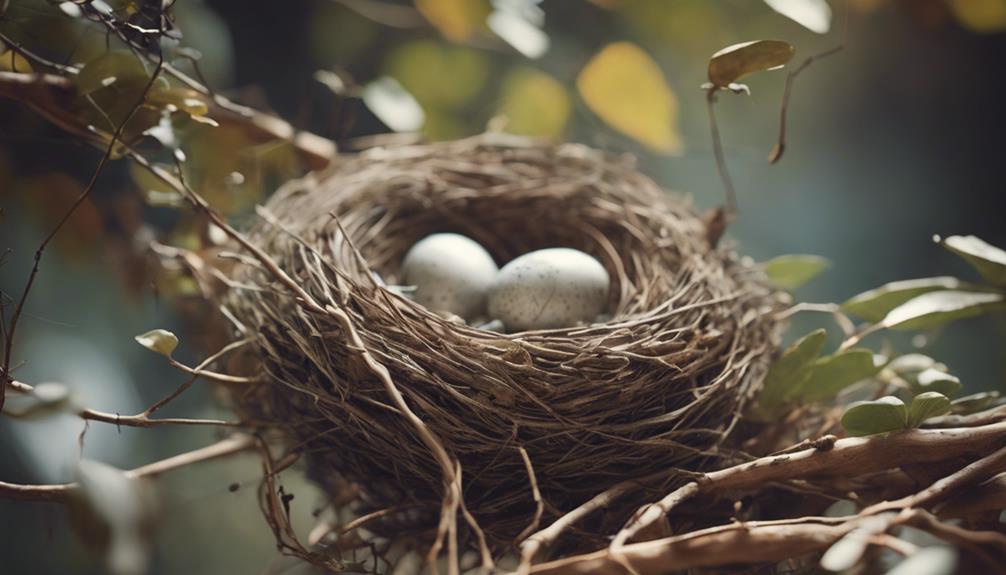
Creating a birds nest in seven simple steps involves gathering materials, attaching the nest to a container, enhancing it with natural elements, placing moss, feathers, and eggs, and adding final touches for display. Start by collecting sticks, feathers, leaves, moss, and grass, then secure the nest with a hot glue gun. Enhance with stems, branches, and raffia for texture and depth, followed by moss, feathers, and realistic eggs. Finish by painting the eggs, adding decorative elements, and selecting the perfect display location to showcase your craftsmanship.Each step contributes to a beautiful and authentic bird's nest creation.
Key Takeaways
- Gather natural materials like sticks, feathers, and moss.
- Construct and secure the nest using a hot glue gun.
- Enhance with branches, raffia, and other natural elements.
- Place moss, feathers, and eggs in the nest for authenticity.
- Add final touches like painted eggs and decorative elements.
Gather Necessary Materials
To begin making a bird's nest, we must first gather the necessary materials. Collecting natural elements such as sticks, feathers, leaves, moss, and grass is important for constructing a cozy avian abode. Choosing a container like a basket or bucket to hold these materials during the nest-building process is a practical step to make sure everything stays organized and within reach.
When gathering materials, it's vital to select a variety of sizes and textures. This diverse selection allows for the creation of a sturdy and comfortable nest that mimics the natural environment birds seek out. By incorporating a mix of white wood, gathered from your garden or a nature walk, you can enhance the authenticity and appeal of the nest.
Home Tours, a renowned platform for showcasing innovative design concepts, emphasizes the importance of site usage in material selection. Opting for a mix of materials not only promotes creativity but also enables customization based on the specific needs of the bird species that will inhabit the nest.
Attach Grapevine Nest to Wreath
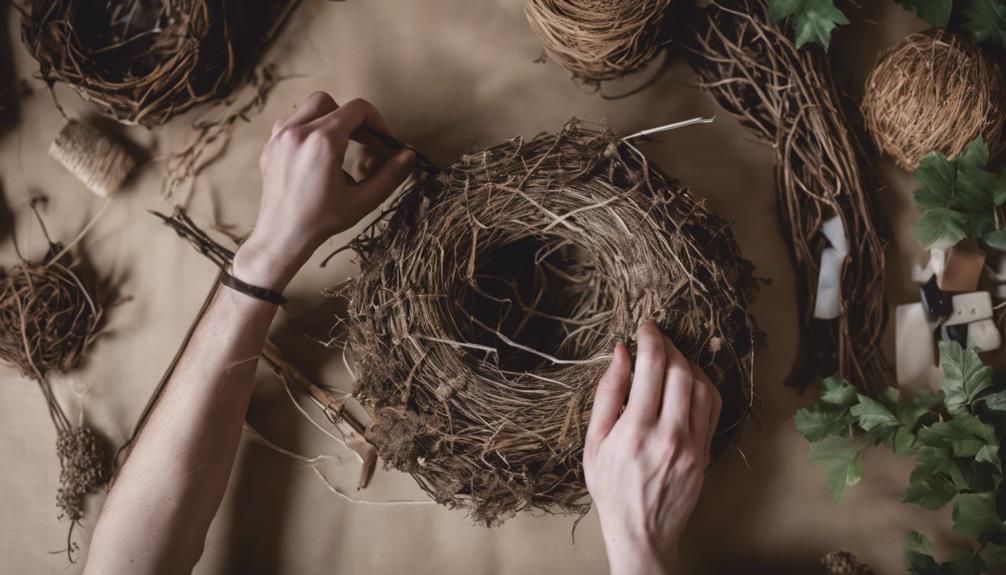
After gathering the necessary materials for making a bird's nest, the next step is to securely attach the grapevine nest to the wreath using a hot glue gun.
When attaching the grapevine nest to the wreath, it's important to follow these steps:
- Choose the Location: Depending on what's visually appealing and well-balanced, select a suitable spot on the wreath to attach the grapevine nest.
- Position Carefully: Make sure the nest is centered and securely positioned to provide a stable foundation for the bird nest creation.
- Secure with Pressure: Press down firmly on the grapevine nest once attached to allow the hot glue to adhere effectively to the wreath.
Add Stems and Branches
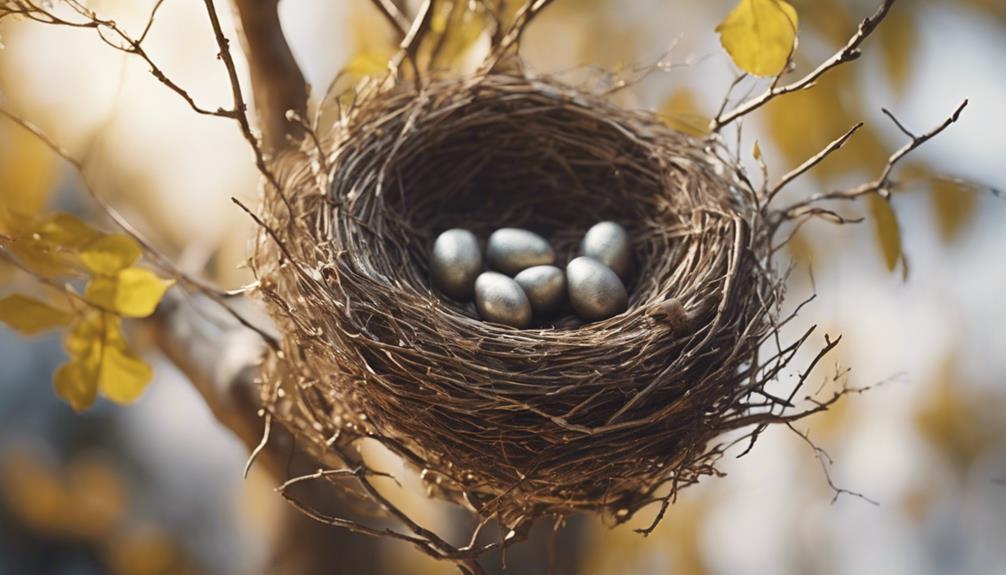
We can enhance the natural look of the bird's nest by adding stems and branches creatively around the wreath. These natural elements provide a textured base for the nest, contributing to a realistic and organic appearance. By positioning the stems and branches thoughtfully, we can elevate the overall look and feel of the DIY bird nest.
Intertwining branches with the grapevine wreath not only adds depth but also enhances the design with dimension. The combination of these natural elements adds visual interest and complements the nest's structure, creating a harmonious and visually appealing final product.
Branches can be strategically placed to mimic the way birds would construct their nests in nature, adding an authentic touch to the decorative piece. The addition of stems and branches is an essential step in the process of building a lifelike bird's nest that replicates the beauty of the natural world.
Secure Raffia Around Nest

Let's discuss the key points when it comes to securing raffia around a bird's nest.
Using natural raffia not only guarantees an authentic look but also provides a sturdy base for the nest.
It's important to wrap the raffia tightly for security and neatly finish the ends for a polished final touch.
Use Natural Raffia
To enhance the aesthetic appeal of the bird's nest, we secure natural raffia around it using hot glue. Natural raffia, a versatile material commonly used in crafts and decor, adds a rustic and natural touch to bird nests and various DIY projects.
Securing raffia around the nest not only provides a visually pleasing aspect but also helps create texture and interest in the overall design. The use of hot glue is vital in guaranteeing that the raffia stays securely in place, preventing it from unraveling or coming loose over time. This step is essential in achieving a cohesive and well-finished look for the bird's nest.
Wrap Tightly for Security
Securing natural raffia tightly around the bird's nest is key to guaranteeing its stability and enhancing the overall aesthetic appeal. When wrapping the raffia around the nest, it's essential to do so tightly and evenly. This technique not only holds the nest in place securely but also adds a decorative touch to the final look.
Using a hot glue gun to attach the raffia ensures a firm connection, contributing to the overall durability of the nest. The inclusion of raffia brings a natural and rustic element to the bird's nest, elevating its visual appeal. As the raffia is wrapped around the nest, it adds texture and dimension to the DIY project, creating a cohesive design.
To prevent any unraveling or loosening, make sure the raffia is firmly attached to the nest. This step is instrumental in maintaining the integrity of the nest structure and ensuring its longevity.
Neatly Finish Ends
We meticulously guarantee the raffia is neatly secured around the bird's nest to maintain its decorative appeal and structural integrity. To achieve this, we use a hot glue gun to secure the raffia firmly in place, ensuring it doesn't come loose over time.
Wrapping the raffia neatly around the nest not only adds a decorative touch but also contributes to the overall aesthetic appeal of the bird nest decor, providing a natural and rustic look that enhances its charm.
- Using a hot glue gun to secure the raffia in place.
- Wrapping the raffia neatly to enhance the decorative aspect.
- Ensuring the raffia is securely attached to prevent unraveling.
Fill Center With Moss and Feathers

When filling the center of a bird's nest with moss and feathers, it's important to choose a variety of moss types. American moss and sphagnum moss provide texture and depth.
Feather selection plays a significant role in achieving a natural and inviting look. Opt for feathers of different sizes and colors for visual interest.
Securely placing the moss and feathers in the nest creates a cozy environment for our feathered friends.
Moss Placement Tips
To create a cozy and natural look, fill the center of the bird's nest generously with moss and feathers. Moss not only provides a soft and comfortable foundation but also adds a touch of nature to the nest.
Here are some moss placement tips to help you achieve the desired effect:
- Cover the Bottom: Make sure that the moss covers the bottom of the nest entirely. This will create a cushioned base for the eggs or decorative items you may place inside.
- Mix Different Types: Utilize various types of moss to introduce texture and visual interest to the nest. Combining different moss varieties can mimic the diversity found in a bird's natural habitat.
- Arrange Naturally: When placing the moss and feathers, aim for a natural and aesthetically pleasing arrangement. Mimicking the way birds construct their nests can enhance the authenticity of your creation.
Feather Selection Guide
Choosing a variety of feathers with different sizes, colors, and textures is crucial for adding visual interest to the bird nest's center filled with moss and feathers. By selecting feathers from various bird species, you can create a unique and natural look for the nest, enhancing its overall appeal.
Strategically arranging these feathers in the nest's center not only provides cushioning and insulation for eggs but also adds a decorative touch. The feathers' mimicry of a bird's plumage enhances the authenticity of the nest's design, making it visually engaging.
Incorporating feathers into the nest helps to establish a cozy and inviting atmosphere, whether for a DIY project or as a decorative piece. Remember to take into account the combination of feather sizes, colors, and textures to achieve a harmonious blend that elevates the nest's aesthetic appeal.
Paint and Glue Eggs
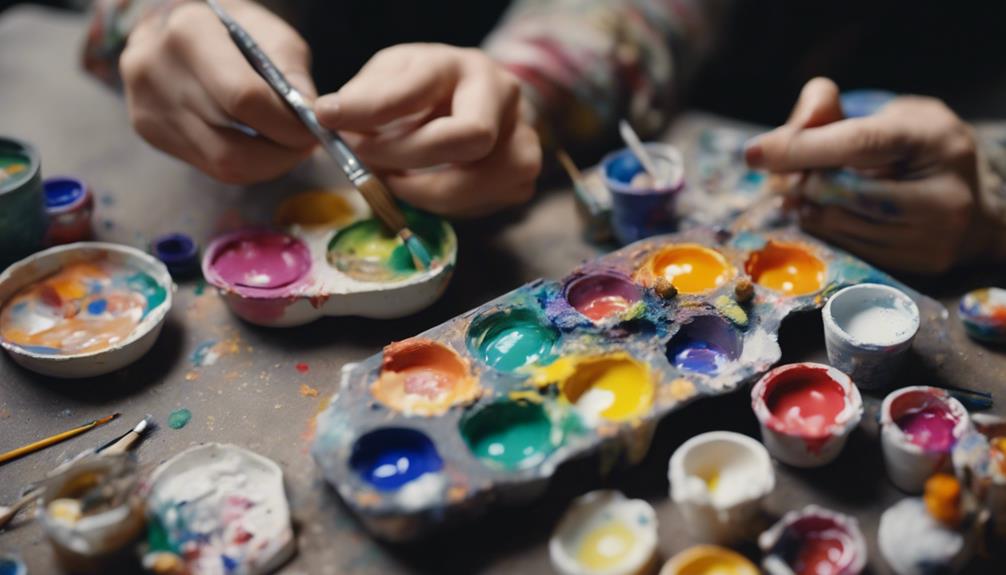
We can enhance the realism of the bird nest by painting and securely gluing paper mache or speckled craft eggs within it. To achieve a natural and authentic look, follow these tips:
- Choose Realistic Eggs: Opt for paper mache or speckled craft eggs to mimic the appearance of real bird eggs.
- Secure with Hot Glue: Use hot glue to firmly attach the eggs to the nest, ensuring they stay in place.
- Paint for Realism: Paint the eggs with colors and patterns that imitate those of actual bird eggs, adding to the authenticity of the nest.
Final Touches and Display
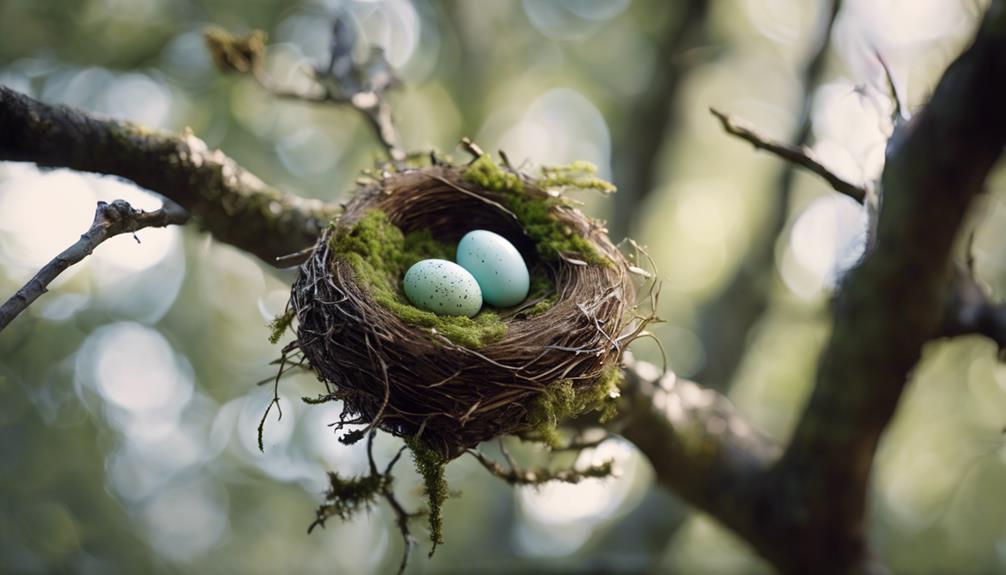
Let's add the final touches and prepare to showcase the completed bird nest in a delightful display setting. Consider enhancing the nest's aesthetic appeal by incorporating decorative elements such as flowers or ribbons. These additions can elevate the overall look of the nest and make it more visually enchanting.
When deciding on a display location, opt for a table as a centerpiece or hang the nest on a door to create a charming focal point. Make sure that the nest is securely attached to prevent any mishaps and maintain its integrity.
For best presentation, place the bird nest in an area with natural light to highlight its intricate details and beauty. Natural light can accentuate the textures and colors of the nest, making it more visually appealing.
Additionally, capturing photos of your bird nest creation can serve as a way to share your accomplishment with others or inspire future projects. By documenting your creation, you can showcase your creativity and craftsmanship while also preserving the memory of this delightful project.
Frequently Asked Questions
How to Make a Simple Bird Nest?
To make a simple bird nest, we start by gathering natural materials like twigs, grass, feathers, and moss.
Construct a base using larger sticks or rocks for structure, then fill in with smaller materials for stability.
Line the nest with softer items for comfort.
Guarantee the nest is camouflaged and secure to protect eggs and chicks.
Following these steps will help create a cozy and safe environment for our feathered friends.
How Do Birds Make Nests for Kids?
Birds make nests by carefully selecting and gathering materials such as twigs, grass, feathers, and mud to construct a secure structure for their eggs. The nest's shape and size vary based on the bird species and their habitat.
Birds often line their nests with softer materials like feathers, fur, or moss for added comfort and insulation. Some bird species, like weaver birds, are renowned for their intricate and elaborate nest-building techniques.
How to Make a Nest for Baby Birds?
To create a nest for baby birds, gather natural materials like twigs, grass, and leaves.
Construct a secure and cozy structure, ensuring it's well-hidden from predators.
Keep the nest clean and dry to maintain a healthy environment for the growing birds.
Regularly inspect the nest for any damage or disturbances.
How Do You Make a Bird Nest at School?
When making a bird nest at school, we suggest gathering natural materials like sticks, feathers, leaves, and grass. Encourage creativity by providing containers for collecting materials and showing examples of different bird nests.
Discuss the importance of nest-building for birds and how it varies by species and habitats. Prompt students to contemplate size, shape, and suitable materials for a successful bird nest construction activity.
Conclusion
To wrap up, creating a bird's nest in 7 simple steps is a fun and creative way to add a touch of nature to your home décor.
While some may find the process challenging at first, following these clear instructions can help simplify the task and lead to a beautiful final product.
So gather your materials and get started on crafting your own unique bird's nest today!
- About the Author
- Latest Posts
Introducing Ron, the home decor aficionado at ByRetreat, whose passion for creating beautiful and inviting spaces is at the heart of his work. With his deep knowledge of home decor and his innate sense of style, Ron brings a wealth of expertise and a keen eye for detail to the ByRetreat team.
Ron’s love for home decor goes beyond aesthetics; he understands that our surroundings play a significant role in our overall well-being and productivity. With this in mind, Ron is dedicated to transforming remote workspaces into havens of comfort, functionality, and beauty.
-

 Vetted3 weeks ago
Vetted3 weeks ago15 Best Contact Paper for Kitchen Cabinets to Elevate Your Home Decor
-

 Vetted2 weeks ago
Vetted2 weeks ago15 Best Poe Cameras for Home Security – Reviews & Buying Guide
-

 Vetted4 weeks ago
Vetted4 weeks ago15 Best Leather Restorer Products to Revive Your Furniture and Accessories
-

 Vetted3 weeks ago
Vetted3 weeks ago15 Best Drain Snakes to Unclog Your Pipes Like a Pro
-

 Beginners Guides3 days ago
Beginners Guides3 days agoI Inhaled Vinegar Fumes
-

 Vetted4 weeks ago
Vetted4 weeks ago14 Best Stationery Brands for Your Next Writing Adventure
-

 Beginners Guides2 weeks ago
Beginners Guides2 weeks agoSwinger Porch Light Color
-

 Mardi Gras Decoration3 weeks ago
Mardi Gras Decoration3 weeks agoWhy Does Hobby Lobby Not Do Mardi Gras?

















